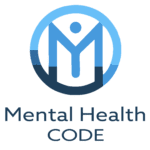

You’ve explored what loneliness is, why it matters, and how to take action toward reconnection. These insights are not just individual tools — together, they create a foundational mindset. Moving forward, it’s not about never feeling lonely again. It’s about knowing how to meet those moments with awareness, emotional skill, and choice. Understanding that loneliness is a human signal — not a personal flaw — allows you to respond with care instead of shame.
Loneliness can return, even after we’ve taken positive steps. Sometimes, it creeps in during transitions — a move, a breakup, a job change — or after reconnecting and then feeling a loss again. That’s why integration matters. By regularly checking in with your connection patterns, emotional needs, and support systems, you stay rooted in your emotional reality rather than slipping into old patterns of isolation.
Practicing compassion toward yourself is part of connection. If your inner voice turns critical during lonely moments — “You should have more friends,” or “Why are you feeling this way again?” — you can pause and reframe. Try: “It’s okay that I’m feeling disconnected. I know how to respond to this.” Tools like mindfulness, journaling, or reaching out to one trusted person can make all the difference.
Connection is about choice, not perfection. Real connection often starts small — a text message, a walk with a neighbor, a few minutes of presence with a loved one. Sometimes we wait for the perfect moment or ideal relationship. But connection builds through imperfect, honest moments. Research from the University of Chicago shows that even small social interactions — like a 3-minute conversation with a stranger — boost mood, reduce stress, and increase a sense of belonging.
Community doesn’t always mean crowds. For Emma, a widowed retiree, connection looked like calling her niece every Sunday. For Yusuf, a busy father of four, it was sharing thoughts with a friend through voice notes during his commute. For Marisol, healing began when she told her therapist she felt disconnected from her own body. For Rob, reconnection happened when he joined an online Dungeons & Dragons group that met weekly on Zoom. These examples show that connection takes many forms — and all of them count.
If you feel overwhelmed or unsupported, remember that help is always available. You can always call or text 988, the Suicide & Crisis Lifeline, for free, confidential support. You’re not a burden. You’re a human being in need of care and connection — and that’s never something to apologize for. You are never truly alone, even when it feels like it.
Nearly 60% of Americans report that they feel lonely or isolated on a regular basis. (Cigna U.S. Loneliness Index, 2020)
Emotional support is a greater predictor of health outcomes than diet or exercise for people over 50. (Harvard Health Publishing, 2021)
Lonely employees are 2x more likely to miss work due to illness and 5x more likely to underperform. (Gallup Workplace Study, 2022)